10 Paintings You Should Not Miss
Get ready for a roller coaster of emotions
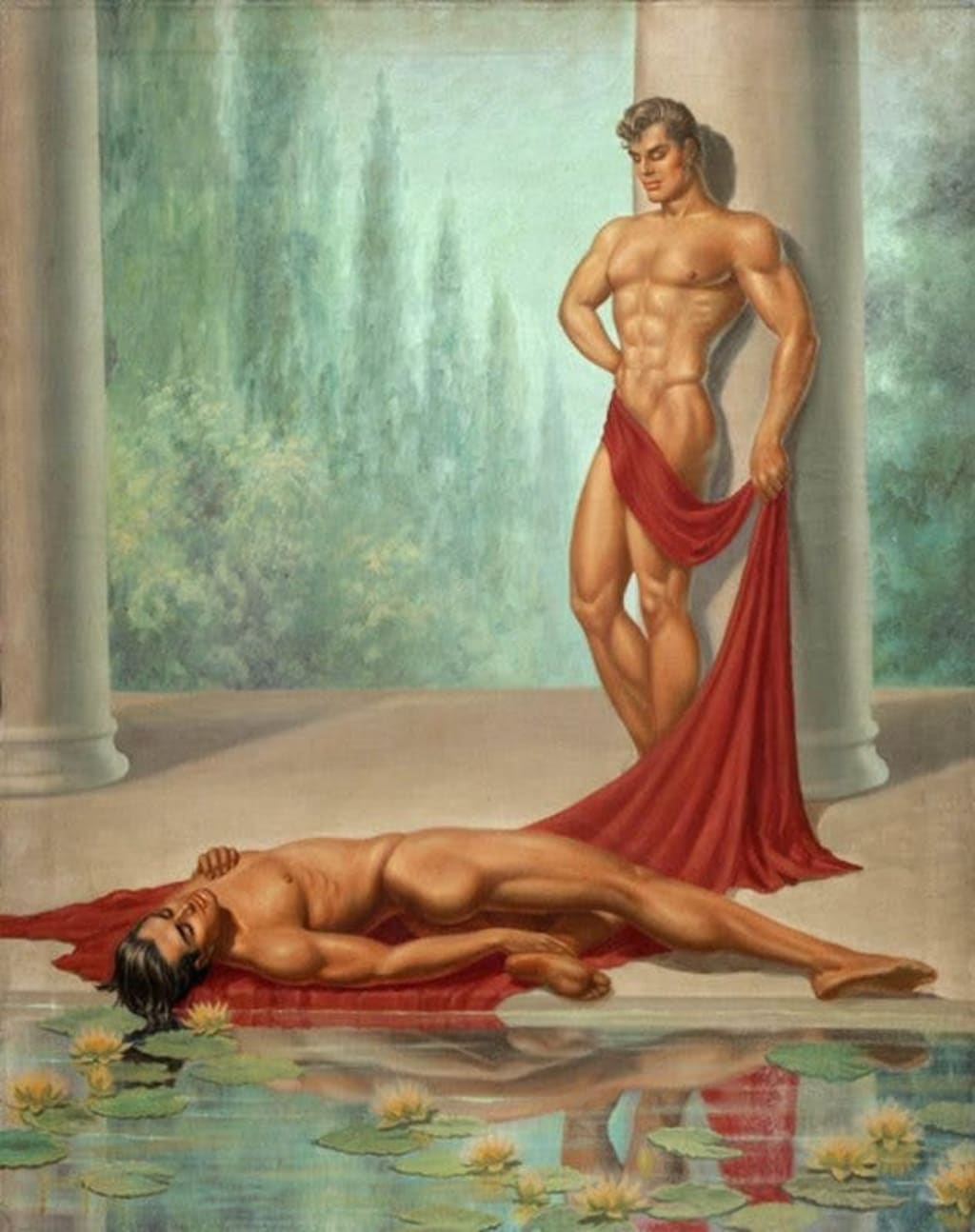
It's been two years since I began writing about art history and interpreting art symbolism.
When someone asks me, "how did I land up in this niche being an engineer and worked in corporate for over 10 years?"
I usually reply, "I love interpreting art history and my audience like reading it."
So here I curate 10 paintings across different timelines in history that would:
• Help you understand the psychology of an artist.
• Arouse your curiosity.
• Engage you with fascinating stories about art history.
• Often frighten you and play with your psyche.
• Make you resilient.
• Aesthetically appeal to you.
• Spark your creativity.
---
1. Untitled by Zdzislaw Beksinski (1984)
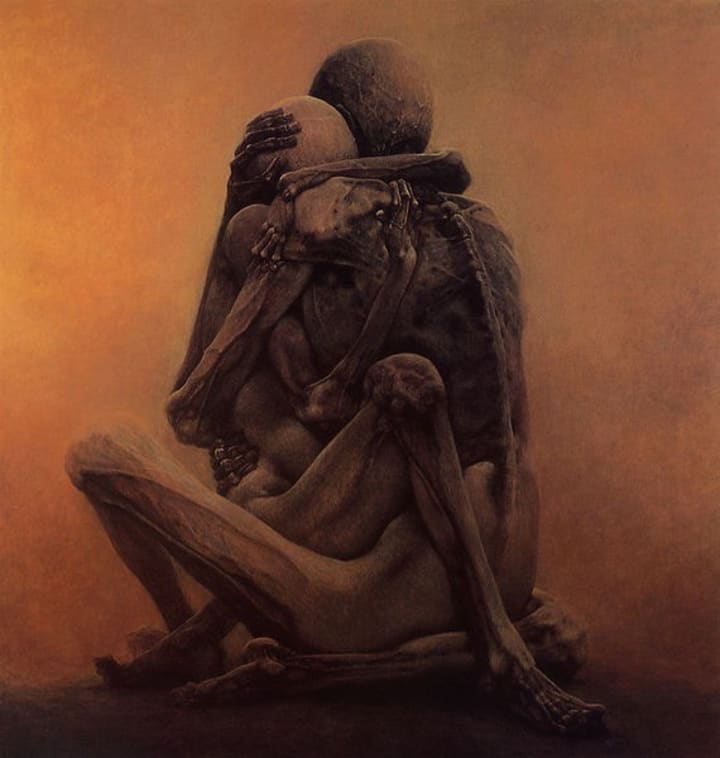
I connect with a painting at two levels - one by seeing its aesthetics and understanding the picture, and second by looking at it deeply and understanding the psychology behind an artwork.
Why was the artwork created? What instigated the artist to draw such a dark image?
Zdzislaw Beksinski was a Polish artist who created paintings filled with elements of dystopia, doomsday, and destruction of the world. He intentionally left his paintings untitled because he felt that art was only to be admired without giving a name or interpretation.
During the Nazi regime, Beksinski personally faced antisemitism and witnessed the mass killings of Jews. This humanitarian crisis impacted his psyche. He created various paintings with obscure faces in a doomsday scenario.
Yet again, this image shows Beksinski's signature style. A skeletal couple in the façade of a catastrophic backdrop.
Did you notice how he portrays love and embrace even after experiencing the worst of humanity?
---
2. Idyll by George Quaintance (1952)
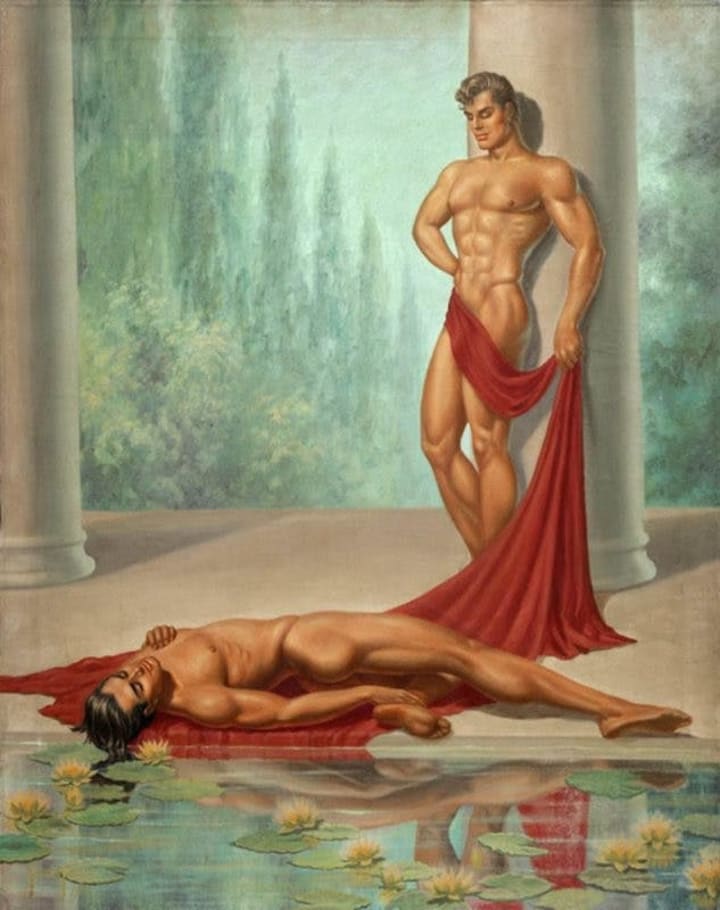
Can you imagine a gay visual artist in 1950s America who embraced gender fluidity long before the term was even coined?
Imagine how difficult it would be to aesthetically portray homoeroticism long before when being gay was not only risky but also illegal.
I'm talking about the gay artist - George Quaintance (1902–1957), who was way ahead of his times and challenged the traditional heteronormative society.
From 1943 to 1957, he created almost 50 homoerotic paintings and drawings of idealized male bodies. His paintings seamlessly exuded elements of masculinity and androgyny in his models, all at the same time.
Idyll is the artwork that attracted me to research Quaintance and his oeuvre. I promise that I was awestruck the moment I saw this painting.
"Idyll" literally means extreme happiness and utopia. Isn't this artwork apt to its title? I love how the painting oozes out the sensuality in a subtle erotic manner.
We can't ignore the shiny ideal bodies of two male nudes with beautiful feminine face gestures and luscious lips. The man against the pillar seems to be fantasizing. The background trees are smaller near his genitalia and proceed to get taller as they move away from him. Is it a visual trick?
Quaintance cleverly concealed frontal nudity with a thin blood-red veil, obviously because nudity was a crime in that era.
The two men showcase a platonic kind of love. The reflection of their nude bodies in a pond looks ethereal.
The lotus spread in the pond symbolizes purity and enlightenment. It is a perfect analogy for the human condition: the Lotus produces the most beautiful flower even when its roots are in the dirtiest waters.
---
3. The Russian Bride's Attire by Konstantin Makovsky (1889)
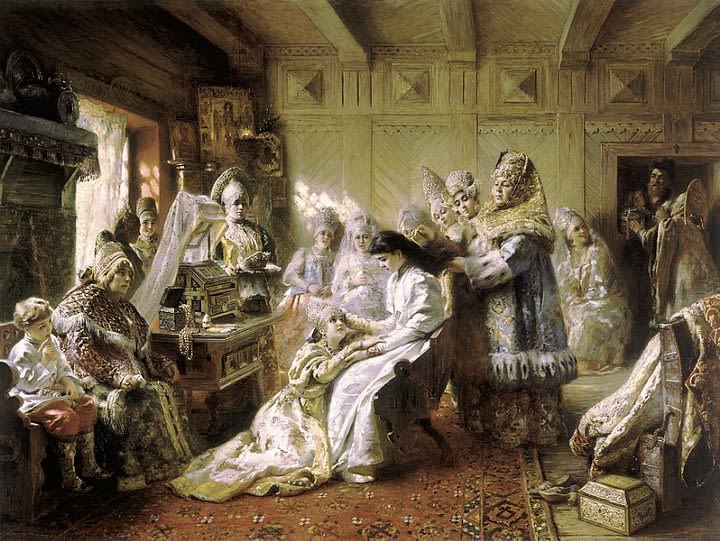
Visual art might not always be creative. Sometimes we admire an artwork only because it is aesthetically sound and brings pure joy to our senses. It might not evoke our emotional sensors, and we might not extract any deep meaning out of it, but we still like it.
So, here I present an influential Russian painter Konstantin Makovsky who drew life-size paintings of traditional Russian weddings, heart-melting portraits of beautiful naive women but with no deep symbolism.
He left a vast body of work, and his works were a combination of realistic, mythological, and historical genres.
This picture shows a life-size depiction of a Russian wedding around the 17th century.
The girl dressed in traditional white attire is the bride. She looks pretty young, almost a teenager. She is shy and sad and about to get married to a tsar she has probably not met. The bride is sun-kissed. The sun's rays pass through the shimmery curtains and cast their shadows on the walls.
The bridesmaids and the bride's family are ethnically dressed and wearing pearl-studded kokoshniki, a Russian woman's headdress.
Traditionally, only women can be present while the bride prepares for the wedding, but an exception is made for the little boy sitting on the left. The man entering the room, possibly the bride's father, is requested to leave the room.
The bride's name is Maria Ilyinichna Miloslavskaya. She is about to get married to the 18-year-old Tsar Alexis I. Makovsky's second wife is used as the model for the bride in the painting.
---
4. Rape by Rene Magritte (1945)
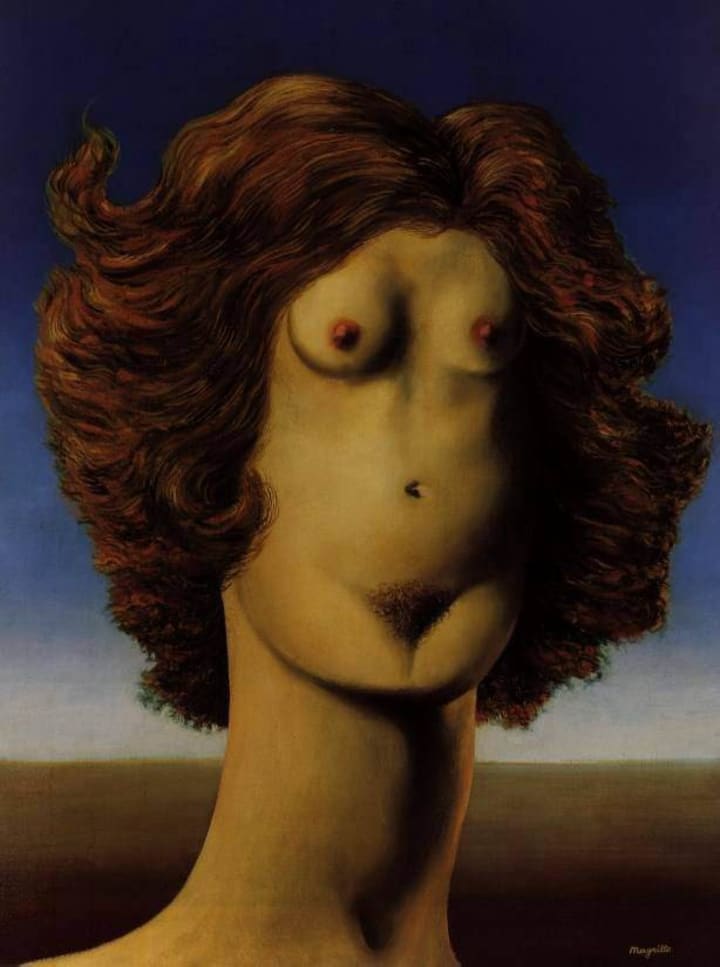
I confess that the first time I saw this painting, it created a strange inkling I might not be able to describe.
The painting moved me. It connected with me. And so, I decided to write about it.
In Rape, the famous surrealist Belgian artist Rene Magritte rearranged the female anatomy. The breasts are the eyes, the belly is the nose, and the genitals replace the mouth.
At first glance, the painting might appear provocative or unpleasant, but for Magritte, the act of rape was considerably more complex.
Why?
In 1912, when Magritte was 14, his mother committed suicide. She was found drowned in the River Sambre. She was supposedly wrapped in a thinly veiled nightgown around her head when her body was recovered.
This traumatic incident sheltered Magritte's psyche and throughout his career, he recreated it in one form or another on his canvas.
---
5. Dream Caused by the Flight of a Bee Around a Pomegranate a Second Before Awakening by Salvador Dalí (1944)
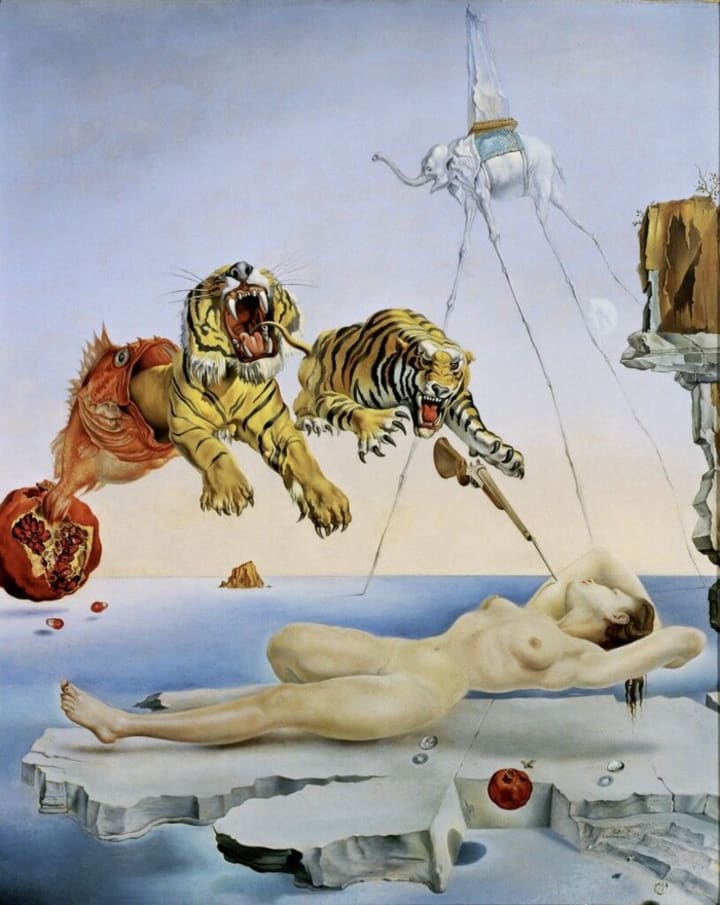
To me, this painting resembles a visual translation of Chuck Palahniuk's fantasy novel - Survivor.
Dali's wife, Gala, sleeps naked on a flat rock that seems to be floating above the sea.
The growling tigers symbolize phallic power. They try to pounce on Gala, Dali's wife. One of the tigers comes out of a yelloweye rockfish that burst out of a pomegranate. Another tries to attack Gala with a rifle and bayonet, pricking her arm, awakening her from a peaceful dream.
The pomegranate holds a special significance in Christianity and Judaism, symbolizing sanctity, fertility, and abundance. The seeds are said to number 613 - one for each of the Bible's 613 commandments.
The pomegranate pieces float between two drops of water. It casts a shadow of heart on the rock. Above it flies a bee, an insect that traditionally symbolizes the Virgin.
The crystalized elephant resembles the Elephant and Obelisk by Lorenzo Bernini.
---
6. The Dream of the Fisherman's Wife by Katsushika Hokusai (1814)
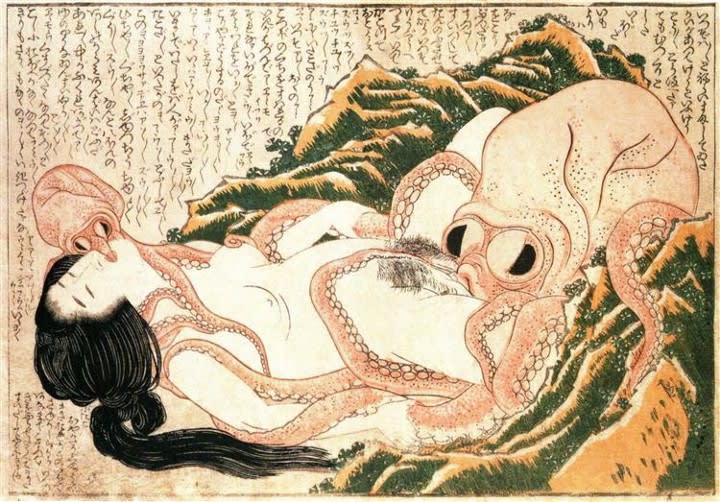
This is perhaps one of the most erotic images of all time and, indeed, the one that has fascinated audiences for centuries.
A perfect example of Japanese shunga (erotic) art. The painting displays a fisherman's wife entwined sexually and deriving pleasure with a pair of octopuses; the smaller one kisses her while the larger one performs cunnilingus.
Do you recognize the artist's name, Katsushika Hokusai? Yes, he is behind "The Great Wave off Kanagawa" and is more famous for his landscape portraits than erotica.
One interpretation of this composition is that the Japanese call it Tako to ama. It translates to "Octopus and Shell Diver," meaning entirely different from the prevailing English title. The Japanese title shows the woman as an independent pearl diver who instead has a unique, passionate encounter with an octopus.
While the English title - The Dream of the Fisherman's Wife - detaches her as an independent woman and portrays her as a desperate wife dreaming her husband to be a type of mollusk he fishes or nets for.
This iconic image became a precursor to tentacle erotica, a popular motif in modern Japanese pornography.
---
7. Frenzy of Exultations by Władysław Podkowiński (1893)
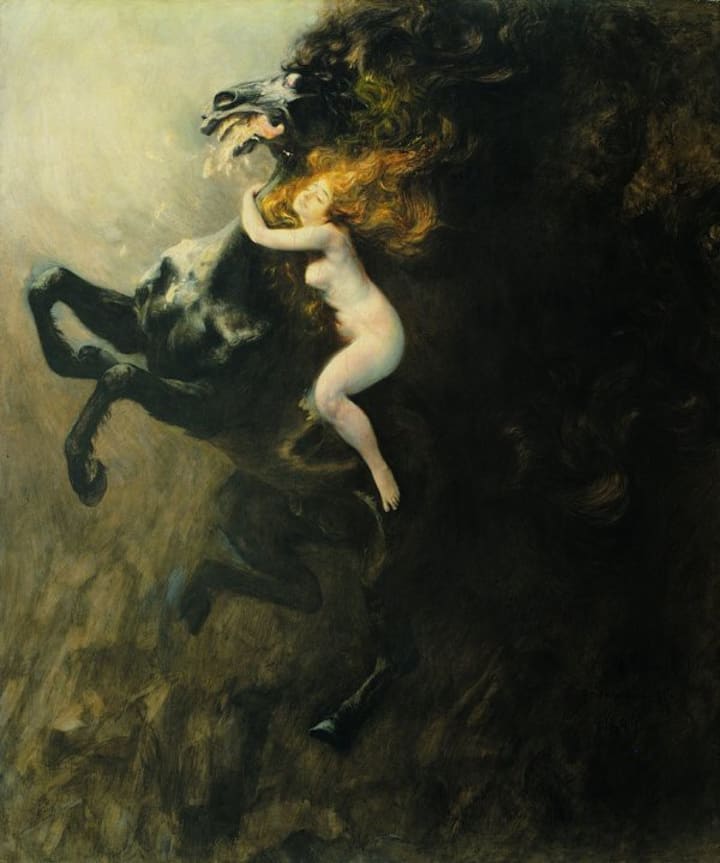
A white nude female passionately embraces a black horse, seemingly in three-dimensional space. The stark contrast between their skin colors is distinct and catches our attention.
The horse is in a frenzy with flared nostrils, and a white foam comes out of his mouth. The girl's red hair blends well with the horse's mane.
The Frenzy of Exultations, often called 'the Frenzy,' is probably Władysław Podkowiński's monumental composition.
Symbolically, The Frenzy depicts the destructive forces of instincts and passions. The woman is carried away by the erotic power of a demonic horse, which is more vital than will.
It's a frenzy of sensual intoxication but different from classical, medieval, and philosophically promiscuous agitations from the time before the French revolution.
It's not even a romantic frenzy. This frenzy is directly linked with a frenzy of destruction, known by psychiatry - as either murderous or suicidal.
---
8. Study after Velázquez's Portrait of Pope Innocent X by Francis Bacon (1953)
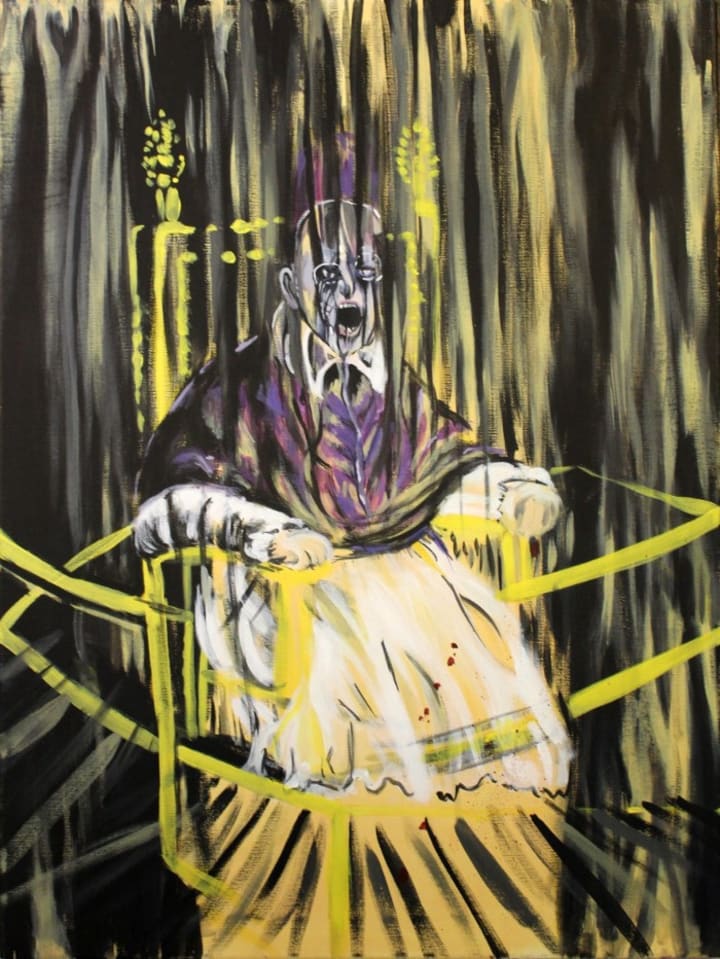
Diego Velázquez's Portrait of Innocent X was created in 1650. But when American artist Francis Bacon made a distorted and nerve-wracking version of Pope Innocent X, it caught more attention than ever.
Francis Bacon was born in 1909 in an Irish rabid protestant family. His father was a devout Catholic, and Bacon had complex dynamics with his father since childhood. Bacon's father was always angered by his effeminate gestures and dressing. Once Bacon was caught by his father wearing his mother's underwear, a story emerged his father's stable boys whipped him.
In turn, Bacon developed sexual relations with the stable boys. The first of many incidents exhibiting his masochistic behavior.
He once told in an interview that "my father and mother disgusted me and offered me to one of their friends."
He portrayed himself as a "Roaring Boy, Lord of Misrule and Conveyor of Artistic Violence." But that is only part of the truth. He built this façade, intentionally hiding the complex narrative behind the sadistic men in his life.
---
9. Netherlandish Proverbs by Pieter Bruegel (1559)
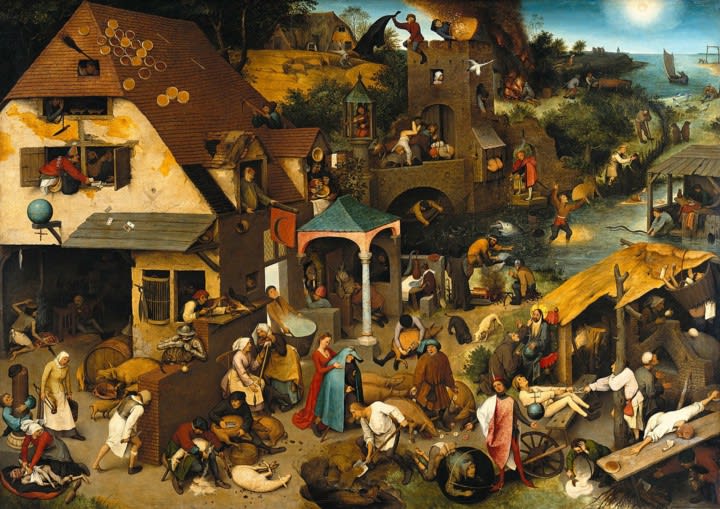
Are you game to learn English proverbs from a painting? Do you wish to play a game with your child and identify the hidden proverbs from this 450-year old painting?
Then check out Netherlandish Proverbs by Pieter Bruegel the Elder.
A perfect composition where literature meets art.
For instance - In the center, she puts the blue cloak on her husband. It means she is cheating on her partner.
Can you believe this painting encapsulates over 100 hidden English proverbs and idioms, which are still in use?
---
10. The Abduction of Psyche by William Adolphe Bouguereau (1895)
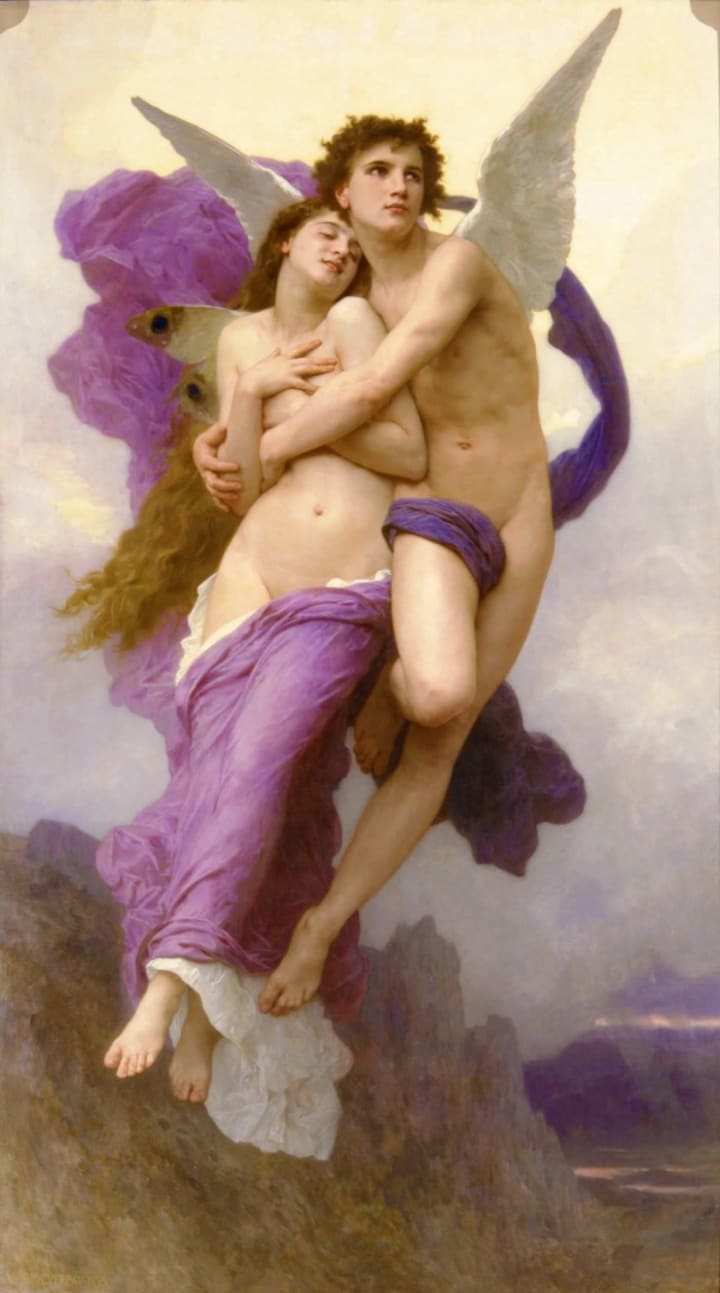
Perhaps, this is one of the favorite Greek myths for legend lovers - Psyche (worshipped as the incarnation of Venus) married Cupid after a complicated relationship.
Psyche is shrouded with soft purple transparent fabric. The wavy hair flow and the skin is silky smooth. Bouguereau does not use the typical pink and red, often associated with young love.
He chose to paint Psyche with butterfly wings because 'psyche' was the Greek word given to butterflies by Aristotle.
This levitational scene doesn't look like Psyche is abducted by Cupid. Instead, she holds a gratifying expression. The half-clad Psyche covers her breasts with eyes closed and travels across the mountainous landscape with Cupid.
-----
My next ebook ‘10 Paintings to See Before You Die’ is out.
This book curates the 10 most famous paintings for art history lovers who wish to dig deeper and analyze art and artists.
About the Creator
Kamna Kirti
Art enthusiast. I engage with art at a deep level. I also share insights about entrepreneurship, founders & nascent technologies.
https://linktr.ee/kamnakirti
Reader insights
Outstanding
Excellent work. Looking forward to reading more!
Top insights
Expert insights and opinions
Arguments were carefully researched and presented
Compelling and original writing
Creative use of language & vocab
Excellent storytelling
Original narrative & well developed characters
Eye opening
Niche topic & fresh perspectives
Heartfelt and relatable
The story invoked strong personal emotions
Masterful proofreading
Zero grammar & spelling mistakes
On-point and relevant
Writing reflected the title & theme
Easy to read and follow
Well-structured & engaging content







Comments (2)
Personally, I thought this selection was really inspiring and motivated me, as an artist, to look outside the box and explore different styles/genres when it comes to art. There may have been more of an emphasis on dark or erotic work but I believe it is important to see how so many great artists were able to paint and display such things in times where this topics were very much taboo. There is a lesson to be learnt behind each one and to call it "sinful" or adulterous" to look at feels like we are regressing back to medieval times when the Catholic Church was in charge.
I like art history and love symbolism in art, especially as an artist and writer myself, but I was scandalized and shocked by the selections here. I can't stop people from looking at sinful, adulterous paintings, but I wish there was at least a disclaimer at the top of the piece that this was not a family-friendly list. There are so many great works of art with so much symbolism in them, I'm disheartened to see such a heavy emphasis on erotic work.
This comment has been deleted